As a prepper, you probably already know that some weeds are edible. However, if you don’t know to tell the difference between the edible ones and those that are unpleasant – or even harmful – to eat, you’ve probably avoided any experiments with weed cookery.
Many people have already added edible weeds to their diet, though – and some of them believe this goes beyond just being a survival skill. Some weeds can be quite tasty, as well as nutritious. And, if you are concerned with survival, adding nutrients to your diet is a useful bonus.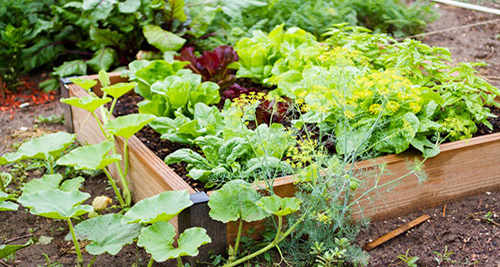 Now, if you are ready to venture out into your backyard or local park to see what parts of nature’s out-of-control landscaping might be edible, read on for some valuable information.
Now, if you are ready to venture out into your backyard or local park to see what parts of nature’s out-of-control landscaping might be edible, read on for some valuable information.
Edible Weeds Can Also Be Bad for You
I don’t want to confuse you before you even get started, but even some edible weeds should never be consumed. So, before we get into testing to see if a weed is edible, make sure to avoid weeds found in the following conditions, whether they are considered edible or not under normal conditions:
- Weeds near a road – many of the plants along a roadway have absorbed runoff and exhaust fumes from the traffic.
- Weeds growing where livestock are kept or where people walk dogs a lot – weeds can be contaminated through animal feces.
- Weeds exposed to pesticides – eating anything contaminated with pesticides can be very hazardous for a person’s health
However, if you follow those rules there are plenty of weeds around that can be very good for you, especially if you find yourself in the position of needing to survive on minimal supplies. They just need to pass the weed edibility test.
Related: How Cherokees Used Trees of Southern Appalachia for Food, Medicine, and Craft
The Edibility Test for Weeds in Your Backyard
Fortunately, you can test weeds if you have any doubt about its edibility. Yet, it’s very important to test only one part of the plant at a time. For example, test only the leaves, the flower, or the stem at first.
Here are the steps you should follow to know if a weed is edible:
#1. Physically remove the plant part to be tested from the rest of the plant, rather than leave it attached, to prevent cross contamination.
#2. With your fingers or a tool, crush the part you are testing and then smell it. What you are looking for at this point is a strong or acidic odor. However, don’t stop here, because you can’t rely on odor alone.
#3. Place a portion of the plant (that has been crushed or pressed enough for sap to release) in the bend of your elbow for 15 minutes. If your skin does not react in any way, move on to the next step.
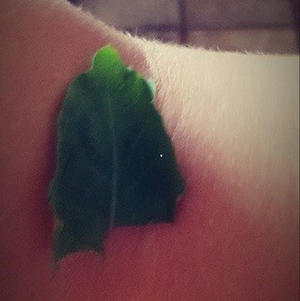 #4. This step must be done after not eating for 8 hours. Drinking water only is fine though. After checking your skin one more time to see if a rash or irritation has developed, prepare a small portion of the plant by cooking it. Some plants contain toxins which are often destroyed during the cooking process. However, if you don’t have the ability to cook it, continue the test with the raw plant.
#4. This step must be done after not eating for 8 hours. Drinking water only is fine though. After checking your skin one more time to see if a rash or irritation has developed, prepare a small portion of the plant by cooking it. Some plants contain toxins which are often destroyed during the cooking process. However, if you don’t have the ability to cook it, continue the test with the raw plant.
#5. Hold a small part of the plant against your lip and hold it for a minimum of 3 minutes. At this point you are watching for a reaction, such as itching, burning, or any other irritation.
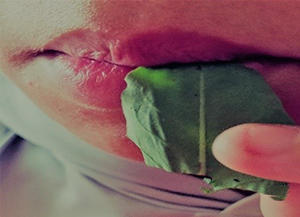 #6. If you have no reaction at all after three minutes, put that sample against your tongue, without chewing (or swallowing) it, for approximately 15 minutes. You will be looking for the same reactions as above – itching, burning, or irritation of any sort.
#6. If you have no reaction at all after three minutes, put that sample against your tongue, without chewing (or swallowing) it, for approximately 15 minutes. You will be looking for the same reactions as above – itching, burning, or irritation of any sort.
#7. Once you are sure there isn’t a reaction when holding it on your tongue, the next step is to chew it thoroughly and hold it in your mouth for approximately 15 minutes, without swallowing.
#8. If there is still no reaction, go ahead and swallow the portion you just chewed, but no more.
#9. At this point, wait for eight hours without eating anything else. If you start to have a reaction of any kind during that time, induce vomiting and drink plenty of water.
#10. After the 8-hour period is over and you have had no reaction or ill effects, eat about ¼ cup of the plant, prepared in the same manner as above. Wait an additional eight hours. Again, if you experience a reaction, induce vomiting and drink water.
After carefully following the above steps in testing the weed, if no reaction has occurred the part of the plant that was tested can be considered edible and safe to consume as prepared in the steps you followed. If you plan on consuming additional parts of the weed, they should each be tested in the same manner.
If you plan to increase the amounts you consume, do so slowly. Keep in mind that any time you consume an unfamiliar plant in substantial portions you risk unfavorable reactions such as nausea, cramping, and diarrhea, especially when eaten on an empty stomach. So, even edible weeds should be eaten in moderation until tolerance is built up.
You may also like:
10 Trees Every Survivalist Should Know and Why
This Bug Will Kill Most Americans During The Next Crisis (Video)
30 Most Popular Herbs for Natural Medicine
40 Bizarre Home Remedies Our Grandparents Taught Us That Actually Work

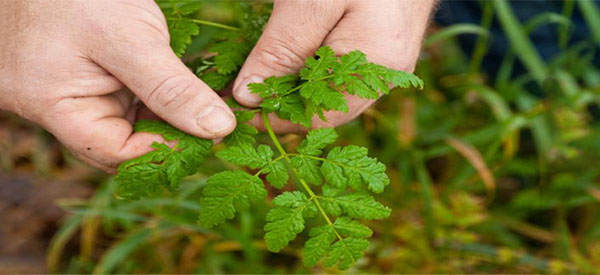
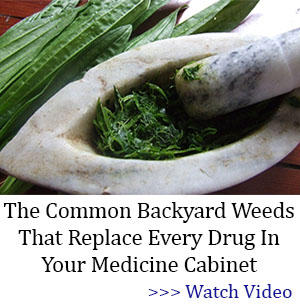













get a pack of wild food playing cards. Learn while you play. also easy to use as a backpack reference
note that there are some plants are toxic until boiled..
some wild plants are government protected. blood root and trillium are prime examples
Look into permaculture landscaping.
If we are in a survival situation do you really think anyone will be concerned as to what is or isn’t government protected? I know when it comes down to my or my families survival the last thing on my mind will be what is or isn’t protected by the government.
Good article.
Two things:
The best definition of edible I’ve read says that “edible” doesn’t mean that it tastes good or is even palatable, just that it won’t kill you if you eat it.
Second, I believe it was one of the Foxfire books or maybe one of the “My Folks…” books that came from a pioneer family on the prairie. As they were grubbing and struggling to live, their rule was, if the cows eat it, then we can cook it and it eat. Sounds risky to me, but hunger is a powerful motivator.
Be thankful and be ready.
I don’t believe that the comment, “if the cows can eat it, we can cook it and eat it is 100% accurate.”
While the only specific plant that I can think of right now that ruminants can eat the humans probably can’t is corn stalks, I suppose with enough cooking they would mush down and be edible.
That said, I have read in other articles that indicated that is not a good indicator, that animals can eat stuff that humans can’t and not just because it is hard to chew. I am not an expert on the subject of edible wild plants — wish I were. I have several books on the topic but I find it difficult for me to tell one plant from another. This one is poisonous, that one is not. Well, sorry I am going to avoid anything that looks similar because I can’t see enough difference for me to be certain that I am right.
Tell you what. You eat it and if you are still around on Saturday, then I will join you in the feast.
I really feel this is a topic that requires good hands on instruction from somebody who has made a habit of eating the particular plant in question.
Amen to your comments. Still, it is good to know a test for edibility.
The whole point of being a prepper is to prepare. If you’re out in the middle of nowhere hungry and are doing all these edibility tests to find out if you can eat a damn weed you have definitely not prepared.
Me and my Sweetie were wandering around a Mexican Nature Park years ago, not lost or anything but after walking all morning we were hungry and thirsty, hadn’t seen a soul on the hiking trail, gettin a little cranky, when all the sudden out in the supposed middle of nowhere we walked up on a big Palapa that had tables and chairs, a kitchen, a bar, FROZEN MARGARITAS! To heck with weeds and edibility tests…then there was the time a friend of mine got separated from his party hiking in the Rockies on a cold wet foggy day, started making bad decisions because of hypothermia and instead of dying wound up being rescued by a Girl Scout troop. Miracles do happen, but in general God is not patient with us when we are foolish.
Amen to that, Mike. Many times something stupid is preceded by “Watch this.”
As in the recent video making the rounds wherein the motorist is matadoring a bull bison in the middle of the road with his bare hands. Fortunately for him the bison was in a mellow mood that morning.
How many beers does it take to make someone think that is a good idea?
depends on the person but no matter how many beers you’ve had or how many bottles of high dollar sake you’ve drank,you’d have to be suicidal or stupid to do that.
so you are waiting 24 hours and then have only eaten about a quarter cup of what you are testing and nothing else. If you are already out of food when you do this, It is really a fast.
I love you posts! I get so much information here that is valuable and even life saving. Thank you so much!
I have read somewhere the practical suggestion to have 5 wild plants that you really, really know well. This is a splendid idea. In my part of Texas, there is abundant prickly pear (tunas and nopales), mesquite (beans ground into flour) and live oak (acorns) plus pecans, wild plum, and mustang grapes (fairly inedible unless made into jelly.) No doubt there are many other wild edibles, but I’m not that interested. What are your five?
May I point out in my earlier comment I was not advocating eating a plant just because a cow eats it. That is not what I said. I told an anecdotal history of a pioneer family, desperate for food. Apparently they survived because someone lived to pass the story on. I would hope to never be in such a situation, although throughout history, many stories of starvation abound of the desperation that led people to boil their belts and shoes for a little nourishment or led people to eat grass to put something in their bellies.
Plant common edibles in your own yard. Nasturtiums make attractive beds and are tasty. Gogi berries are indestructible, but most people wouldn’t be able to identify them. Purslane is a nice low growing plant. Plant herbs all over the place. They love to explode given the opportunity, and your garden will be richer for the butterflies that lay their eggs on various herbs.
You won’t have to wonder what a plant is if you are the one who planted it.
I concur with the previous comment. Plants herds everywhere and encourage wild local edible plants. Anywhere I love I research wild na local edibles. I have been foraging and gathering for many years, mostly herbs and greens but have moved to a rural area of Michigan where there is a cornucopia of wild foods if one knows what to look for. and when. Know your land.
My mother was a great one for identifying back yard plants. We would pick young dandelions for wine and salads, Purslane, Lambs Quarters, wild morel mushrooms and pine needles. We would make a pine needle tea which tastes great, but when you first start drinking it you would be advised to stay close to a toilet…you’ll need it. But soon your system gets used to it and then just enjoy! Oh yes, I haven’t seen them in YEARS but we also would walk by the roses and pick and eat the rose hips.
Roses are still making hips, just depends on the type, I believe. Per all I’ve read, rosa rugosa types make the best hips. We planted several of those on our property because the hips are supposed to be very high in Vitamin C. Rosa rugosa is a hardy rose that can stand up to various conditions, including proximity to the ocean.
I wonder if you are not seeing hips because of that new rose brand that has taken over our country, Knockout roses. Here is my soapbox. Knockout roses are hardy and disease resistant. The first 1000 bushes you see are pretty, all the same color, until you realize they are replacing glorious, old fashioned roses. Where I live it’s a rose monoculture.
Not only can rose hips make nice tea and jelly, I read something very interesting awhile back that has turned into a personal quest. I read a pamphlet from WWII, where the government was encouraging women to use rosa rugosa as a vegetable. The only problem is, I have yet to find a savory recipe, and I’ve searched high and low.
Google “heirloom roses” to find rosa rugosa plants. Plant an old timey bush to give you hips and put variety back into roses.
PS I’m interested in how you ate those rose hips with your granny. It sounds like raw. Is that correct?
My comment about the dangers of the edibility test has been deleted. So, I will try again.
Learn a few plants: their use and how to identify them. Then learn a few more.
This test is dangerous. Some plants may only cause a rash but in a survival situation that can only make things worse. Other plants can kill and some of those should never be touched. Poison hemlock and giant hogweed are two that should be avoided. If you are not sure of proper ID for a plant do not even touch it.
We don’t delete negative comments. All feedback is appreciated, good or bad. But our spam filter is not perfect. We have over 3000 spams every day so it’s pretty hard to go through all of them. I apologize for the inconvenience.